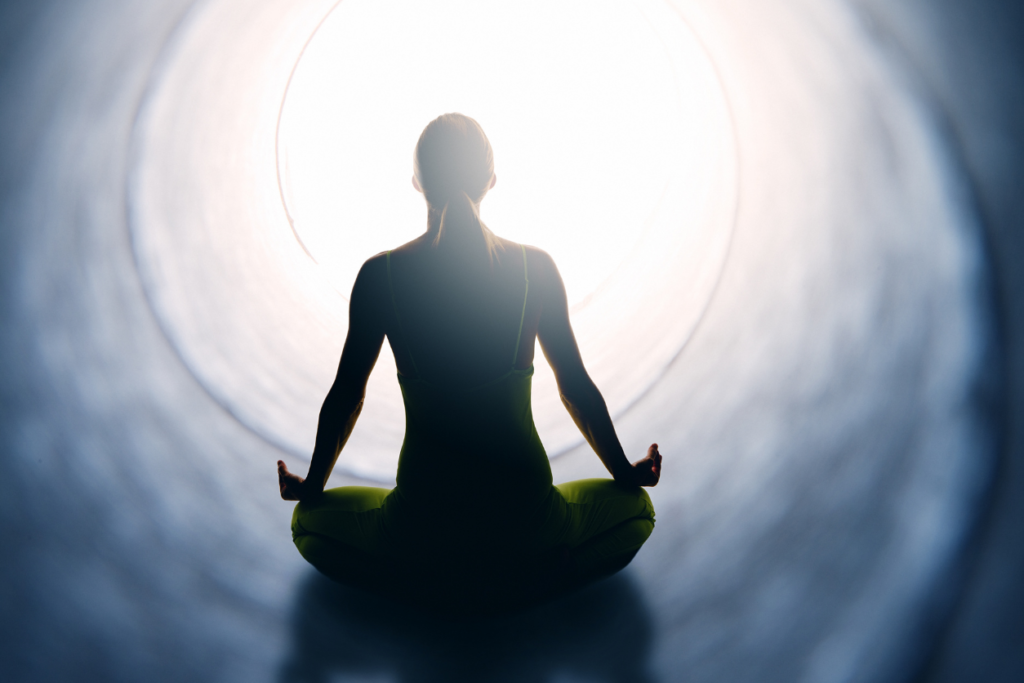Meditation Techniques for Health
Practice Basics
The most basic practice of sitting meditation is while sitting motionless to watch our thoughts. We don’t think our thoughts we just notice what they are and then let them go. In order to get even more clarity in this, we use a technique called thought labeling. For example, if we notice the thought “I don’t like doing this,” we simple recite back to our self, I don’t like doing this and then we refocus the mind. Or maybe the thought is I can’t do this. In this case, we say back “having a believed thought that I can’t do this. It can become quite a shock to a Zen student to come to know just what it really is that the mind is really up to. Over time we come to hold our beliefs far more lightly as we come to realize that our thoughts have no substance. In short, we don’t have to believe our thoughts. Thoughts have no reality. They could be true and they may not be true. Learn more about Energy Healing, Muscle Testing & Mental Clarity.

Even when we clearly see and label our thoughts, staying in the experiential world is still very, very difficult, and not only in the early stages of practice. Why is it so difficult to stay present in the moment? Why, even while sitting still in mindfulness meditation, is it so hard to simply reside in the body? What are we resisting? We have to be honest about this. We often don’t want to stay in the present moment for more than a few seconds.
On the most superficial level, perhaps it’s difficult to reside in the experiential world because it’s so unfamiliar. We’re not educated to experience, to be present, to inhabit the sensory world. Most of our formal education involves cultivating the thinking process; and even informally, our culture is mostly orientated toward fostering the goals of security and comfort. So at least on one level, learning how to be present requires repeated practice, to counteract our years and years of conditioning.
But an even greater difficulty is the fact that often when we allow ourselves to actually reside in the present moment, we don’t like it one bit. Often we come in contact with an underlying jangle – the anxious quiver in our being. We might feel the vague sensations of groundlessness or the hole of discomfort at the core of our unhealed pain. And our first impulse is almost always to resist experiencing this. Why? Because it doesn’t feel good at all. We instinctually move away from the discomfort, back into the false comfort of our thoughts.
This is especially true when we are having a strong emotional reaction. For example, if anxiety arises, sometimes the feeling of dread can be so intense that it almost feels like death. Even when we remember to practice — which means to be able to see the anxiety as our path, not as something we have to get rid of — it still might be very difficult to actually reside in the feeling of anxiety itself. Labeling the thoughts will help a great deal because we no longer fuel the emotion by believing in our thoughts — thoughts such as, “I can’t do this” or “This is too much.” But even when we are able to label and thereby loosen our attachment to the thoughts, there may still be resistance to the physical discomfort of anxiety. We resist, most simply put, because we don’t like the discomfort. Especially for those practitioners who have been sitting for many years, it’s difficult to admit this fundamental (and humbling) fact that we simply don’t want to feel bad.
But with practice, we may eventually discover one of the key understandings in the path to awakening — that these strong emotions, which can feel like death, are not death. In fact, what they are is really nothing more than a combination of believed thoughts and very strong or unpleasant physical sensations. As we make the soft effort to stay with the physical experience of the emotion, this fact can gradually become clear to us. This may take perseverance and repeated efforts, but it is possible, through experiencing, to transform our once very solid emotional reactions into something much more porous. It’s not that the reactions necessarily disappear (although in many cases they might), but that they are much more lightly held.
In the example of anxiety, perhaps the best way to describe this is that you could feel anxiety but not be anxious. The identification is not so much with “me” or “my anxiety”, as it is with the wider container of awareness itself. From this wider container, from this increased spaciousness, there is a certain stillness within which we can experience what’s going on. The best analogy is where we liken awareness to the sky, and all of the contents of awareness — our thoughts, our emotions, and our states of mind — to the passing clouds. As we experience our emotions, we actually can come to understand this cloud quality — that they are not as dense and substantial as they appear. Rather, this thing that we call emotion is just a complex of thoughts and sensations, and, like a cloud, of no substantial reality. But this understanding, if only intellectual, will do little in helping to transform our lives. The only way to make this understanding real is through the practice of experiencing itself, where we actually bring awareness to the physical reality of the moment.
Meditation combined with energy healing supercharges all aspects of our growth. The insight and awareness gained in sitting meditation allows for greater and greater insight as to just what it is we are up to which in turn allows our energy healing to go far deeper. This in turn helps to calm and settle our unruly minds.



